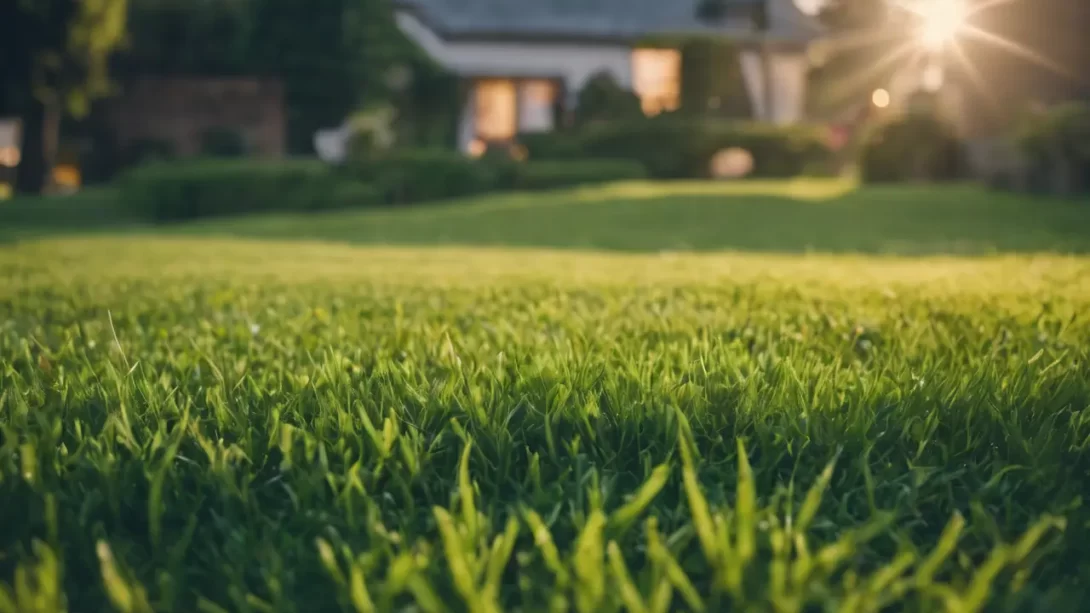Bermuda grass (Cynodon dactylon) is a familiar sight in many lawns, golf courses, and sports fields, especially in warmer climates. Its popularity stems from its lush appearance and resilience. However, one common question among gardeners and landscapers is regarding its spreading nature. This article aims to delve into the growth patterns of Bermuda grass, providing insights into how it spreads and what this means for lawn management and maintenance.
Characteristics of Bermuda Grass
Bermuda grass is known for its fine texture, deep green color, and dense growth habit. It thrives in warm, sunny climates and is particularly well-suited to areas with mild winters. One of the key characteristics of Bermuda grass is its remarkable resilience. It can withstand heavy foot traffic, recover quickly from damage, and adapt to a variety of soil types. This hardiness makes it a preferred choice for areas that experience high usage or need a turf that can maintain its aesthetic appeal with minimal care.
Growth Patterns of Bermuda Grass
Understanding the growth patterns of Bermuda grass is crucial for effective lawn management. This grass variety spreads both through stolons, which are above-ground runners, and rhizomes, the below-ground stems. These growth mechanisms enable Bermuda grass to cover ground quickly and efficiently. The stolons extend horizontally, rooting at nodes and creating new grass plants, while the rhizomes grow underground, helping the grass to spread beneath the soil surface. This dual spreading method contributes to the aggressive growth rate of Bermuda grass, allowing it to establish quickly and dominate areas where it’s planted.
Advantages of Bermuda Grass Spreading
The aggressive spreading habit of Bermuda grass offers several advantages for lawn care and landscaping. Its rapid growth and ability to spread quickly enable it to provide full lawn coverage in a short amount of time. This characteristic is particularly beneficial in areas that experience high foot traffic or have suffered lawn damage, as Bermuda grass can repair and regrow quickly, maintaining a consistently lush appearance.
Furthermore, the dense mat of grass formed by its spreading stolons and rhizomes helps in preventing soil erosion, making Bermuda grass an excellent choice for areas prone to erosion or where ground cover is needed swiftly. Its durability and resilience to wear and tear also make it a preferred choice for sports fields and public spaces where the grass is subjected to constant use.
Challenges Posed by Bermuda Grass
Despite its advantages, Bermuda grass’s propensity to spread can also pose significant challenges. Its invasive nature means it can easily encroach into garden beds, flower borders, and neighboring lawns, where it may not be desired. Controlling its spread can be challenging, as both the stolons and rhizomes can penetrate deep and wide, often beyond the intended area.
This invasiveness can lead to increased maintenance efforts to keep it contained. Gardeners and homeowners may find themselves frequently pulling out stray growths or employing various methods to restrict its spread. The aggressive nature of Bermuda grass also makes it a tough competitor against other plants, potentially crowding out less aggressive species in mixed plantings.
Managing the Spread of Bermuda Grass
Effective management is key to keeping Bermuda grass’s spreading habit in check. Physical barriers like edging materials can be used to define boundaries and prevent the grass from invading adjacent areas. Regular mowing at the correct height is crucial in controlling its growth horizontally. Mowing not only keeps the lawn looking tidy but also helps in weakening unwanted spreading.
For more aggressive control, chemical herbicides can be used, although they should be applied carefully to avoid harming nearby desirable plants. Selective herbicides that target grass can be effective, but it’s important to follow the instructions and safety guidelines to minimize environmental impact and health risks.
Alternatives to Bermuda Grass
For those seeking less invasive turf options, there are several alternatives to Bermuda grass. Each alternative comes with its own set of characteristics, advantages, and disadvantages, and the choice largely depends on the specific needs of the area and personal preferences.
One popular alternative is Zoysia grass, known for its tolerance to shade and less aggressive spreading habit. Another option is Fescue, particularly tall fescue varieties, which are well-suited for cooler climates and require less maintenance in terms of mowing and watering. St. Augustine grass is another choice, ideal for coastal areas due to its salt tolerance. While these alternatives may not spread as aggressively as Bermuda grass, they still provide a lush, green lawn and have their own unique requirements and benefits.
Conclusion
In summary, Bermuda grass is a popular choice for lawns and sports fields due to its resilience and rapid spreading ability. This characteristic allows for quick lawn coverage and easy repair of damaged areas. However, its invasive nature can pose challenges in terms of maintenance and control. Effective management strategies, such as physical barriers, regular mowing, and judicious use of herbicides, are essential to prevent it from encroaching on undesired areas.
For those looking for different turf options, there are several alternatives to Bermuda grass that offer a balance of aesthetic appeal and easier maintenance. Ultimately, the choice of grass should align with the specific needs of the area, climate conditions, and personal preferences for lawn care. Understanding the growth habits and management techniques for Bermuda grass can help homeowners and gardeners maintain a healthy and well-managed lawn that enhances the beauty and functionality of outdoor spaces.



